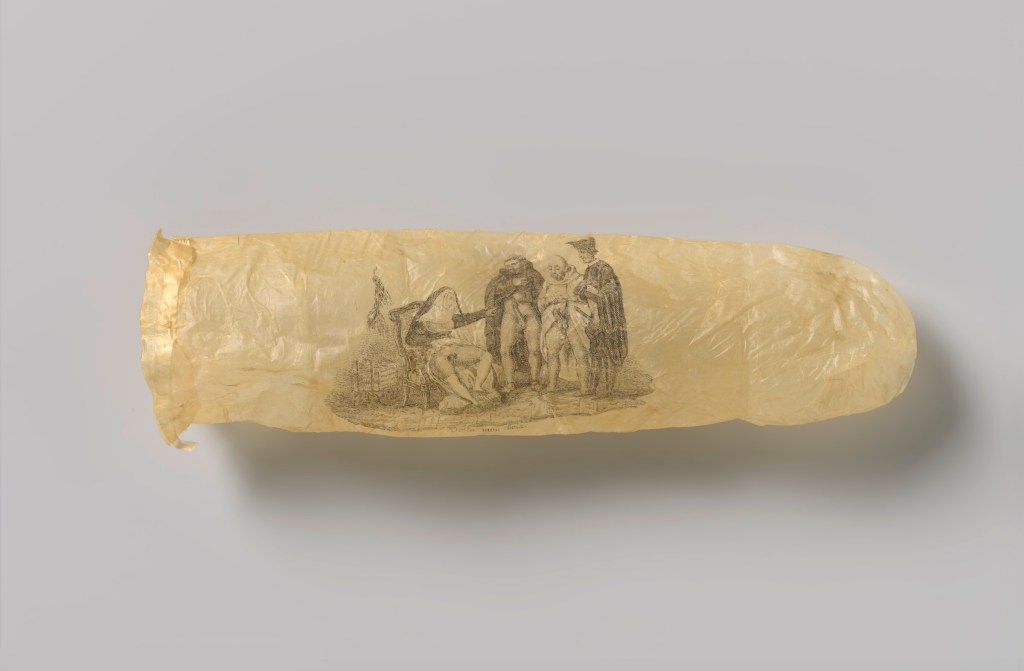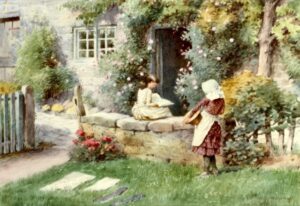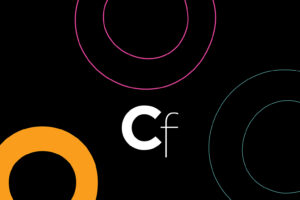Museum Displays 200-Year-Old Condom Printed With Erotic Image


Let’s get inky! A 19th-century condom etched with an erotic print is now on view at the Rijksmuseum in Amsterdam in a display of various historical objects surrounding sex work and sexual health. Depicting an exposed nun pointing at three aroused clergymen, the condom is made of sheep intestine and dated to approximately 1830, when it was likely a souvenir from a luxury brothel in France.
Beneath the etching is the inscription “Voilà mon choix,” which translates to “This is my choice” in English. Joyce Zelen, a curator of prints at the Rijksmuseum who secured the condom’s acquisition last November, told Hyperallergic that the text is not only a joke about the nun’s unorthodox desires, but also a reference to Ancient Greek mythology.
“ On one hand, it shows a sort of parody on religious celibacy, but the composition is also clearly a joke on the Judgment of Paris, where he [the prince of Troy] chooses the most beautiful of the three Greek goddesses before him,” Zelen said in a phone call. “For me, that underlines the potential clientele for such a luxury condom with a print — they were probably a wealthy and well-read person.”
She also noted that behind the nun in the illustration is a cradle, clearly indicating her desire to get pregnant.

Zelen and one of her colleagues came across the object last November at a Bubb Kuyper auction in Haarlem.
“We came to the point where we had to decide: ‘Which of us is going to call our boss to ask if we can buy a condom?’ And yeah, that was me,” she said. They purchased the object at its starting price of €1,000 (~$1137).
At an above average 20 cm (~7.9 inches) in length, the condom is protected by a vitrine and anchors a broader display of collection objects pertaining to sex work and sexual health in the 1800s, primarily surrounding the dangers and proliferation of syphilis ahead of the development of penicillin.
“On one side, we have erotic prints of couples in almost all of the kama sutra positions, and images surrounding the male fantasy of visiting a brothel and choosing the most beautiful woman to take him behind the curtain,” Zelen explained.
“But there isn’t a single condom in those images, since that ruins the fantasy,” she continued. “So on the other side, we highlight the actual reasons why condoms became popular, including syphilis and unwanted pregnancies.”
Images and stories from medical publications are included on the educational side of the display, including documentation of those who were infected with syphilis as adults and those who were born with congenital defects after being infected in utero.

That being said, Zelen noted that “it was frowned upon or forbidden to use condoms for contraceptive and preventative purposes in the church,” and that medical professionals of the era couched venereal diseases in more abstract terms, like “skin diseases,” due to their taboo.
The sheep intestine condoms were designed to be washable and reusable for pregnancy and disease prevention at that time, but Zelen noted that they were rather ineffective at both. All things considered, she doesn’t believe that the printed condom had any mileage on it before it became a novelty item.
Rebecca Fasman, a curator at the Kinsey Institute for Research in Sex, Gender, and Reproduction in Bloomington, Indiana, told Hyperallergic that she loves that the Rijksmuseum’s acquisition is going to be on display.
“ Oftentimes we think of our ancestors as being kind of humorless or under the belief that sex is only for procreative purposes — or that people weren’t having these robust, wild sex lives,” Fasman said. “Part of our shared humanity, as proven by items like this etched condom, is that not only were people having non-procreative sex, but they’re also laughing about it and creating material culture that also was sort of in on the joke.”
The condom will be on display at the Rijksmuseum until sometime in November.




